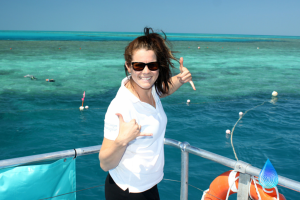Emergency Action Planning For Sport Massage Therapists
I felt like a deer in the headlights when she asked me.
“Can I get a copy of your Emergency Plan to give to the other team’s trainer?”
My what?
“Your Emergency Plan, you’re supposed to have one ready, or on file before each game to give to the other trainer.”
I had NO idea.
I had volunteered with the team for the previous five years and had never heard of this. However this time I was the head trainer, which came with a whole group of responsibilities I didn’t yet know about.
Part of the league rules were that each team head trainer had to have an Emergency Plan in place in the event that a player was badly injured and needed medical attention beyond what we could provide.
I had yet to do my first road trip and receive one of these documents from another trainer.
All I could do was apologize and promise to have one ready for the next game.
I felt like an idiot.
Massage Therapists As Part Of The Team Within A Team
Even though I felt like an idiot, I was fortunate.
I’ve had to do this kind of thing before and have some experience with it.
There is more to this than just printing up a document. It designates you as a leader, a professional, an expert and a damn good communicator.
When it comes to working in sport, your athletes are your responsibility, but there are times when trainers of opposing teams must work together (actually most of the time it’s important to work together).
I won’t go so far as to speak for other sports (although I’d assume it’s much the same), but in hockey the trainers are almost like their own little team, within the teams. On road trips, it’s not uncommon to forget equipment and have to borrow tools or get help with injuries from the other team’s medical staff. There are constant favors being done back and forth to help each other, whether it’s laundry, equipment trades or holding coaches back from attacking each other (yes it happens).
The same applies when someone is hurt in a game. While your athletes are your responsibility, if they get hurt bad enough that you have to go out on the field, ice or playing surface to help, everyone is on edge.
If the trainer puts their fist up into the air, that’s typically the signal they need more help. At this point, what team you’re on doesn’t matter, it’s all about THAT athletes safety. When it’s done right, it can be seamless, when it’s done wrong it can be a complete cluster…well you know.
There has to be one person in charge and it’s not a time to start second guessing things. When the trainers are working together as a team, in the best interest of the athlete, there can’t be any ego’s. If the athlete is on the other trainers team, they have started first aid protocols before you get there and you may get assigned a somewhat menial task.
If all you are asked to do is call 9-1-1 or go and direct paramedics to the scene, that’s all you need to do.
Why You Need To Develop An EAP
The preparation for these kinds of emergencies starts long before the injury or the game even starts.
Making sure you have a well prepared Emergency Action Plan will give the proper steps to ensure a positive outcome for both trainers and athlete. Also making sure your medical equipment is in good working order and properly stocked prior to game time is crucial.
Like I mentioned before when it’s done properly it can be seamless almost like watching an orchestra of movement. The people who are really good at it, can direct with confidence, which in turn instills confidence in the people they are directing.
I’ve been fortunate to watch several people who excel at it and watch how seamlessly they can direct people to do what they need while still tending to injuries and dealing with a patient.
Being able to direct one person to help deal with injuries, one to lead paramedics in and others to get extra equipment doesn’t come naturally, or easily and it must be practiced.
Part of the reason why it’s important to develop an Emergency Action Plan is because of your knowledge of your environment. When teams come from other towns or cities they don’t have the intricate knowledge of the area like you do. Nor do they have the knowledge of the idiosyncracies of your building or area of play.
Every little thing you know that could possibly delay more advanced medical help arriving is crucial information to be able to share with the other trainer.
For instance:
- Is there a preferred entrance for paramedics to use?
- Is there a better entrance/exit to take the athlete away from the playing surface?
- Are there gates or doors that would have to be unlocked for paramedics to gain access?
- Where do you keep extra medical equipment stored?
- Are there more staff/people on hand trained for medical emergencies that can help?
- Is there an AED stored close by?
- Where is the closest hospital or medical clinic?
- Are there any slang names that are used for common areas of the building/sport area?
While these things might seem simple, to someone who isn’t familiar with the area, it can be crucial.
Having a face-to-face with the other trainer before game time to review your Emergency Action Plan is not only beneficial but can be life saving.

Photo by: Jon Candy
Setting Up An Emergency Action Plan For Sport Massage Therapists
I’ll never forget the first time I was in command of an accident scene with the fire department.
I was beyond nervous.
On the way a senior officer was driving and giving me tips on what to do before we got there. But I had never been in command before and was totally unsure of myself.
Midway through the call, one of the chiefs arrived on scene. He calmly came up, grabbed me and pulled me out of the accident. We walked up a hill about 15 feet from the accident and he told me “here is where you need to start”.
His point was to take a deep breath, take a step back and look at the entire scene, not just the middle of it. Look at what things could possibly go wrong, take a broader view to make sure everything is safe.
Undoubtedly, you will be in the middle of the emergency if this is your scene. Before anything ever happens, take a step back. When you’re making up your Emergency Action Plan, try to envision everything that could possibly go wrong when your athlete has to be taken off the playing surface, or is seriously hurt on it. Anticipate as much as possible. While you will never be able to come up with everything, it’s a good start. If an emergency does happen and something you didn’t think of occurs, go back, review and update your EAP.
There are several things that need to be included on your Emergency Action Plan. Remember, this should be shared with the visiting trainer before game time:
- Level of First Aid that is available during the game (team doctors, first responders, paramedics, and how many of each).
- Location of any First Aid equipment and supplies (AED, spine board, clamshell).
- How to get more help if needed (the fist in the air is fairly common).
- How you will respond if needed.
- Methods of transport if needed.
- Any prearranged routes out of the area and to medical treatment (you can just copy and paste in a picture from google maps).
- The role you want the trainer to follow.
- The roles other team members will follow (ie: equipment managers, coaches)
If possible, make this a one page plan that can be handed off to anyone. You can make it as detailed or as simple as you want, but the above points should all be included. I’ve heard some trainers say theirs is a 4-5 page document. It’s fine if you want to be that detailed, but in an emergency situation, it’s not practical to have to review something that long.
You can download the one I made up by clicking here, if you want to see a simple example of one.
Whether you’re the head trainer or there strictly as the team Massage Therapist, you should have a working knowledge of the EAP. If you’re not the head trainer, ask if you can review it and ask what role you can play if there is an emergency. More importantly ask if you can be part of a practice to make sure things run smoothly if you are going to be part of the emergency medical team. If you are the main medical person for a team, make sure you conduct a practice every once in a while to make sure all staff members are familiar with their role in the case of an emergency. Go back and review your EAP every once in awhile. Every year, equipment needs, First Responder protocols and athlete medical conditions will change. Make sure the EAP reflects everyone of those changes. Just try to avoid being like me and feeling like an idiot!





